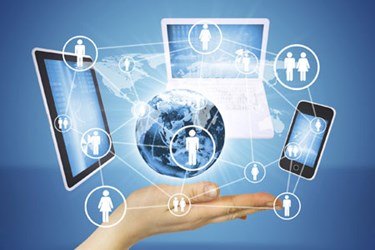A Connected Future: What It Will Look Like And Why You Should Care
By Rick Delgado, contributing writer

Any talk of what the future holds needs to include a look at a fully-connected world. In all honesty, it’s not hard to imagine this particular scenario as we’ve already experienced the beginning of it.
The internet has ushered in a new era of connectivity allowing people to communicate in ways never before thought possible, and technological advances have led to a surge of products taking advantage of this capability. Just think of your smartphone and how easy it is to connect to the web at the push of a button. Or perhaps you have a wearable like a FitBit or Apple Watch, with the ability to track your vital signs and relay them to a central server.
These are only glimpses at the potential inherent in a connected world, one which most experts believe could have 50 billion things connected to the internet by the end of the decade. A world that connected is one that your business should be a part of.
What exactly does a connected world look like? For one thing, it will involve extensive use of cloud computing. We’ve already gotten a taste of how versatile and useful the cloud is in the past few years — it’s gotten to the point where we barely think about what goes into receiving and sending emails. Consider all of the other cloud-based applications you use and realize there will be much more of that in the future with nearly every program and tool — from project management to research collaboration to big data lakes — powered through cloud computing.
But that’s just the tip of the iceberg. A connected future definitely involves the Internet of Things (IoT), a term used to describe how everyday objects will have connections to the web allowing them to communicate with users and each other. IoT is in its infancy at the moment with self-driving cars part of it. But the future will have streets full of these cars, as well as appliances embedded with internet capabilities, from telling us when we’re about to run out of laundry detergent to alerting us when repairs are needed.
IoT will also have a macro level presence. Whole cities will be filled with sensor embedded devices, from stoplights to street signs. This will affect traffic flow, waste and pollution management, and even crime prevention. A connected future means being within arm’s reach of a connected device, a thought that thrills some and unnerves others. Either way, it’s going to happen, likely sooner than most think.
With so much promise and emphasis stemming from the connected world idea, it only makes sense businesses have much to gain. Even if your company isn’t currently related to technology, the connected future will affect you. Customers will expect you to feature products or services that take advantage of this technology, even if it seems like such a feature would feel tacked on.
In cases where embedding web-connected sensors in your products isn’t feasible, the connected advantage can still play a role in your company by ensuring you’re able to respond to problems in quick fashion. A complaint on a social media platform, for example, can be answered and rectified almost instantaneously.
The connected future represents a giant puzzle, and allowing your company to be a piece in that puzzle will satisfy customers and help your organization grow. A fully-connected world is the future after all, and becoming a part of it early will allow you to grow and succeed with it.
The ensuing years will be times of adjustment as companies figure out how best to use this new level of connectivity. But if one thing is certain, there’s no stopping the world from becoming more connected. The possibilities that come will results from this concept becoming a reality are nearly endless. It’s time to jump at the opportunity and make the most of it.
